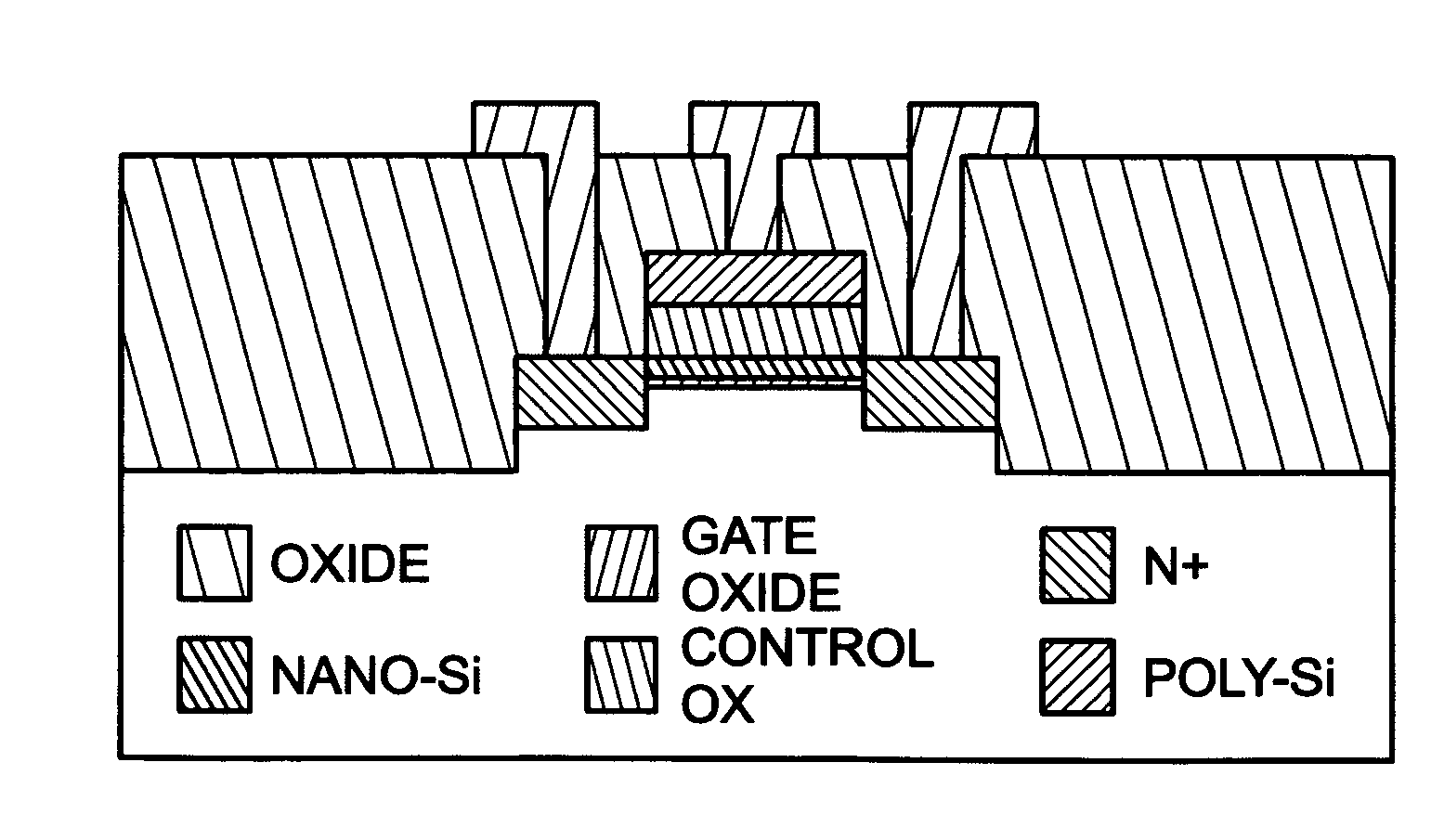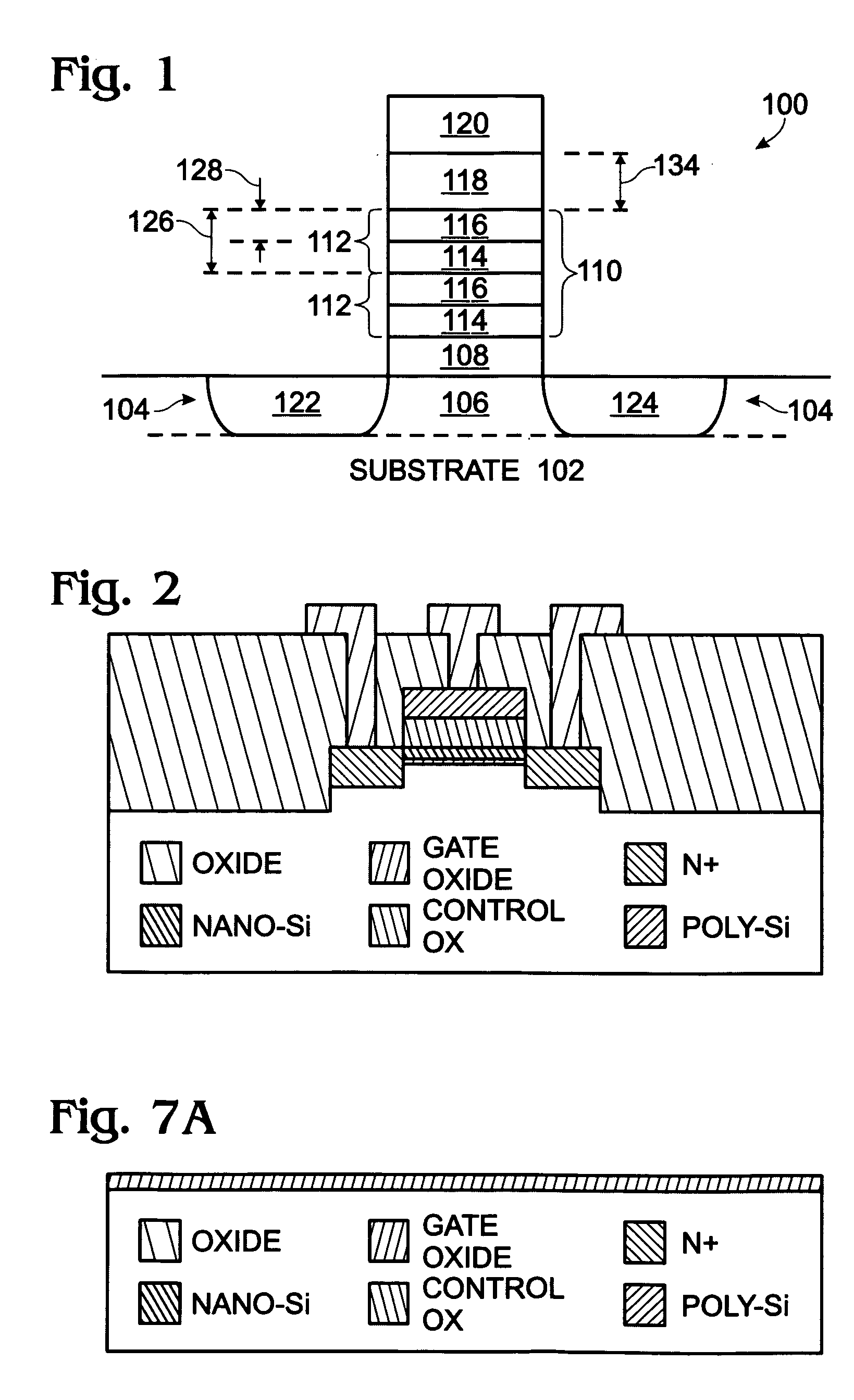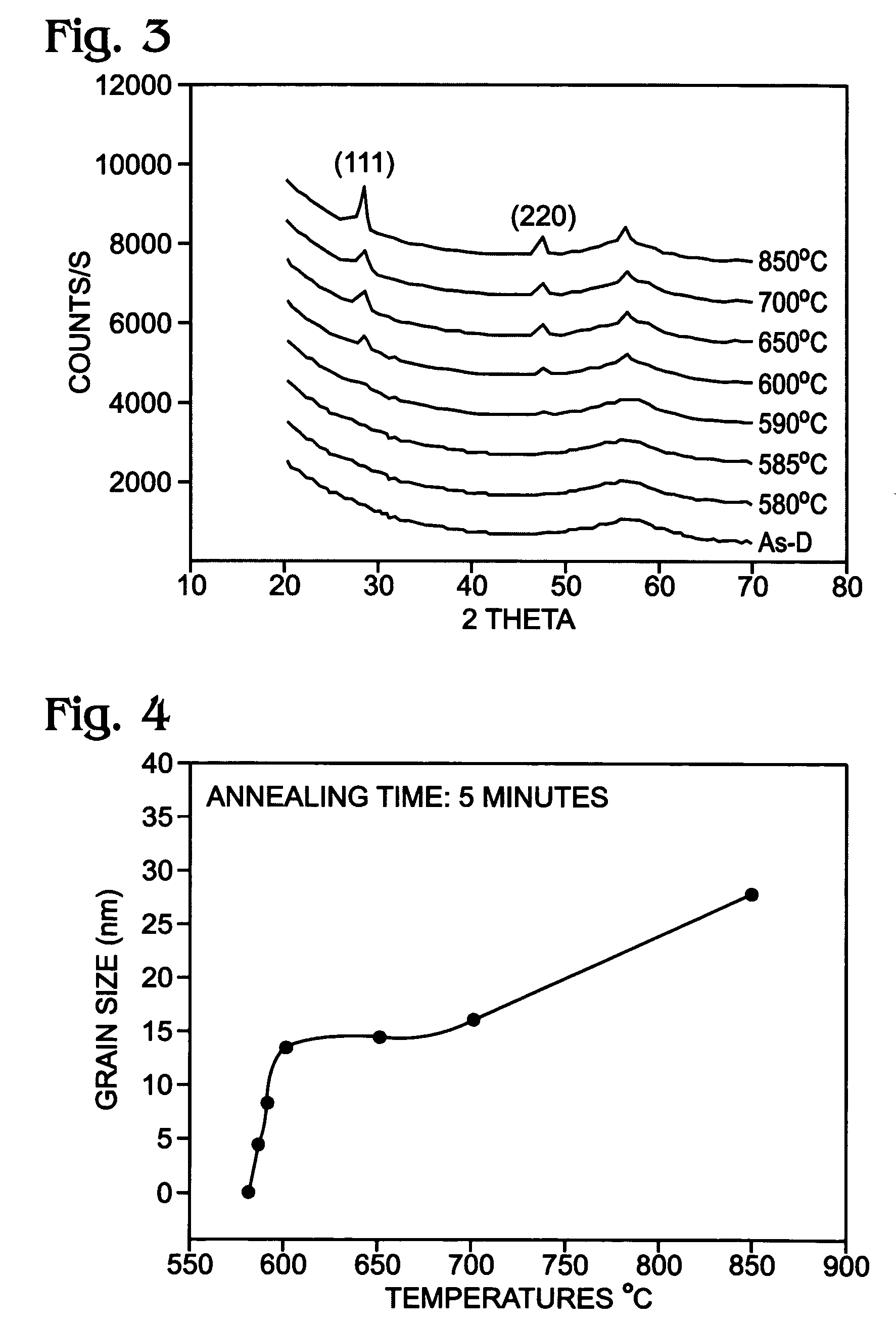Nanocrystal silicon quantum dot memory device
a quantum dot and quantum dot technology, applied in semiconductor devices, digital storage, instruments, etc., can solve the problems of cell wear, flash memory wear factor, non-uniformity of insulating oxides, etc., and achieve the effect of reducing the thickness of tunnel oxide and inter-level oxides, and sacrificing memory retention tim
- Summary
- Abstract
- Description
- Claims
- Application Information
AI Technical Summary
Benefits of technology
Problems solved by technology
Method used
Image
Examples
Embodiment Construction
[0034]FIG. 1 is a partial cross-sectional view of a nanocrystal silicon (Si) quantum dot memory device. The memory device 100 comprises a Si substrate 102 having a Si active layer 104 with a channel region 106, as is conventional with an MOSFET device. A gate oxide layer 108 overlies the channel region 106. The gate oxide layer 108 is also referred to a tunneling oxide layer. A nanocrystal Si film 110, which is referred to herein as a memory film, overlies the gate oxide layer 108. The nanocrystal Si memory film 110 is also known as a floating gate (FG). The nanocrystal Si memory film 110 includes at least one polycrystalline Si (poly-Si) / Si dioxide stack 112, where each stack includes a poly-Si layer 114 and a Si dioxide layer 116.
[0035] A control Si oxide layer 118 overlies the nanocrystal Si memory film 110. A gate electrode 120, or control gate (CG), overlies the control oxide layer 118. The gate electrode 120 can be poly-Si or a metal, for example. As is conventional, source / d...
PUM
| Property | Measurement | Unit |
|---|---|---|
| thickness | aaaaa | aaaaa |
| temperature | aaaaa | aaaaa |
| temperature | aaaaa | aaaaa |
Abstract
Description
Claims
Application Information
 Login to View More
Login to View More - R&D
- Intellectual Property
- Life Sciences
- Materials
- Tech Scout
- Unparalleled Data Quality
- Higher Quality Content
- 60% Fewer Hallucinations
Browse by: Latest US Patents, China's latest patents, Technical Efficacy Thesaurus, Application Domain, Technology Topic, Popular Technical Reports.
© 2025 PatSnap. All rights reserved.Legal|Privacy policy|Modern Slavery Act Transparency Statement|Sitemap|About US| Contact US: help@patsnap.com



